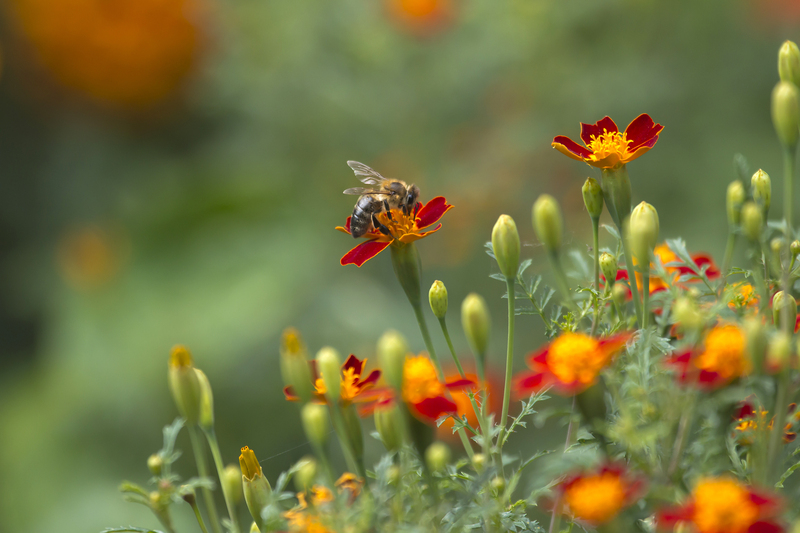Preserve Your Garden's Beauty: Winter Plant Protection Methods
Posted on 30/06/2025
Preserve Your Garden's Beauty: Winter Plant Protection Methods
As the temperature begins to drop and frosty mornings grow more frequent, avid gardeners face their annual challenge--protecting plants during winter. Without the right precautionary steps, your lush landscape can quickly succumb to freezing winds, frost, and fluctuating temperatures. But with effective winter garden protection techniques, you can ensure the health and beauty of your garden all year round. This comprehensive guide will cover practical, proven methods to safeguard your precious plants throughout the cold season.
Why Is Winter Plant Protection Essential?
Even the hardiest plants can struggle when faced with subzero temperatures, snow accumulation, and icy winds. Winter plant care is vital to:
- Prevent frost damage to leaves, stems, and roots
- Reduce winter kill in sensitive perennials and shrubs
- Minimize dehydration from icy winds
- Preserve the overall aesthetic and health of your garden

Understanding Your Garden: Climate, Zone, and Plant Selection
First, assess your local climate zone and determine which plants are at risk. The USDA Hardiness Zone Map is an excellent resource for finding your zone and understanding which plants are most vulnerable. Consider:
- Species' hardiness ratings
- Plant maturity and root system development
- Specific microclimates (e.g., south-facing walls, wind-exposed areas)
Top Winter Protection Methods for Your Garden
1. Mulching: Nature's Blanket
Mulch acts as an insulating layer, regulating soil temperature and reducing freeze-thaw cycles that can damage roots. Here's how to effectively mulch your garden for winter:
- Choose organic mulch--straw, shredded leaves, wood chips, or bark.
- Apply a 2-4 inch layer around the base of perennials, shrubs, and trees, keeping mulch a few inches away from trunks to prevent rot.
- For tender plants, increase depth up to 6 inches.
- Remove excess mulch in spring as temperatures rise.
2. Covering Plants: From Frost Cloths to DIY Solutions
Using physical barriers helps prevent frost from settling on leaves and stems, which can cause cell damage and discoloration. Recommended winter plant protection covers include:
- Frost cloths (also called horticultural fleece or garden blankets)
- Old sheets, light quilts, or burlap
- Plastic sheeting (with caution--avoid direct leaf contact and open daily for air circulation)
- Drape material loosely over plants before evening frost, securing with rocks or stakes
- Avoid weighing foliage down or trapping moisture, which can cause fungal problems
- Remove covers during the day to let in sunlight
3. Wrapping Trees and Shrubs for Maximum Protection
Young trees and certain shrubs are especially susceptible to winter damage, including sunscald, windburn, and splitting bark. Effective tree and shrub winter protection techniques include:
- Using commercial tree wrap or burlap strips to wrap trunks from the ground up
- Creating windbreaks with staked burlap fabric around sensitive shrubs
- Protecting evergreens with antidesiccant sprays if wind exposure is severe
4. Watering Wisely: Hydration Before the Cold
A commonly overlooked aspect of winter plant care is proper watering. While plants are dormant, dry roots can quickly succumb to winter injury. To help your greenery:
- Water thoroughly before the first freeze, particularly for trees, shrubs, and evergreens
- Water during winter droughts on warm days if the soil isn't frozen
- Avoid overwatering, which can encourage rot and fungal problems
5. Pruning: Preparing Plants for Dormancy
Pruning at the right time can strengthen plants for the winter months. Guidelines for winter pruning include:
- Remove dead, diseased, or damaged branches late in fall or after the first frost
- For shrubs that flower on new wood, prune back old stems
- Avoid heavy pruning of perennial flowers until spring, when growth resumes
- Hold off on cutting back ornamental grasses until late winter, as the stalks provide protection and visual interest
Special Considerations: Protecting Containers and Delicate Plants
Container Garden Winterization
Winter plant protection for containers is crucial, as pots expose roots to freezing temperatures. Essential steps include:
- Move planters to protected locations--garage, basement, or against south-facing walls
- Group containers together and insulate with bubble wrap, burlap, or straw
- Elevate pots off the ground to prevent waterlogging and thaw/freeze stress
Bulbs, Roses, and Tender Perennials
For bulbs and sensitive perennials:
- Dig up non-hardy bulbs (such as dahlias, gladiolus) after the first frost, drying and storing them in a cool, dark place
- Apply thick mulch or a protective mound of soil over dormant bulbs left in-ground
- Hilling soil or compost around the base (the "Minnesota Tip" method)
- Wrapping with burlap and filling with straw for insulation
Additional Tips & Best Practices for Winter Garden Beauty
- Clean up debris: Remove fallen leaves, spent annuals, and other plant matter to prevent disease and pests.
- Check plants regularly: After storms or deep freezes, inspect coverings and reapply mulch if needed.
- Mark garden beds: Use stakes or labels to avoid damaging dormant plants when shoveling snow.
- Avoid using salt near plants: Winter de-icers can damage roots--use sand or kitty litter instead.
- Plan ahead for spring: While preparing for winter, note which plants struggle and may need relocating or replacing next season.

Common Questions About Winter Plant Protection
Should I fertilize plants in winter?
Generally, avoid late-season fertilizing. Fertilizers can promote new growth that is easily damaged by frost. It's best to fertilize in early fall or wait until after the last frost in spring.
How do I know if my plants need covering?
Any plant listed as marginally hardy for your zone, or showing past winter damage, will benefit from additional protection. Container plants, evergreens in exposed spots, and young shrubs are especially vulnerable.
What type of mulch is best for winter?
Straw, pine needles, shredded leaves, or composted bark are great organic options. Avoid mulches that compact easily (like grass clippings) or that can mat down on plants.
Conclusion: Preserve Your Garden with Proactive Winter Care
Winter presents a unique set of challenges for gardeners, but with thoughtful planning and the right winter plant protection methods, your landscape can emerge healthy and vibrant come spring. Preserve your garden's beauty by:
- Mulching beds and borders thoroughly
- Covering vulnerable plants and wrapping delicate trunks
- Watering and pruning strategically
- Taking extra steps for containers and tender perennials
Don't wait for the first frost--begin your winter plant care regimen today and preserve the beauty, health, and longevity of your cherished garden!



